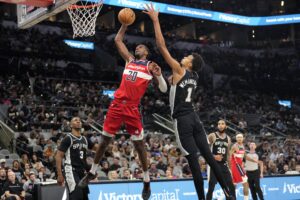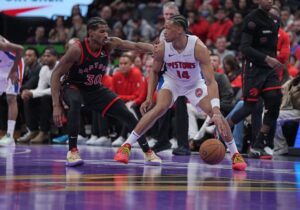College basketball’s perennial powers are struggling this season. Duke has fallen out of the Top 25 for the first time since the 2015-16 season, Kentucky is having its worst season in decades, and North Carolina, while 11-6, is also out of the Top 25. Their one-and-done strategy is again falling short.
One-And-Dones Not Working Out
All the aforementioned teams have a history of success, which creates envy in pretty much every other program. They rely on young, super talented players, who leave school after one year. The best programs in the nation are able to out-recruit the competition, getting commitments from the best players in the class, who then go on to the NBA before becoming a sophomore. Intuition would suggest that this is a winning formula. If your goal is to win, then naturally you would want the great players destined for NBA careers.
Yet the teams with the most talent on paper are struggling. Based on ESPN’s high school rankings, Kentucky has five of the top 50 2020 recruits, which includes two of the top 10. Several players on the roster were expected to be selected in the upcoming draft (at least before the season), but the team is sitting at 5-11. Duke had five recruits in the top 32 but sit at just 7-6.
Some people have chalked this up to the pandemic making the transition to college has been much more difficult. Younger teams didn’t have training camp and the opportunity to become accustomed to playing with each other before the season. That is likely true in part, but even in pre-COVID times, a trend was becoming increasingly clear: experience matters more than talent in college basketball.
A Solid Strategy With Little Results
The strategy of recruiting so-called one-and-dones has led to some great teams in college basketball. Very rarely, however, does it lead to the ultimate goal of a national championship. In the one-and-done era, it has overwhelmingly been the more experienced teams that have won it all.
The one-and-done rule dates back to 2006 when the NBA decided to no longer allow players to be drafted out of high school. There have been 13 national champions since then, so how many do you think had a freshman drafted in the lottery? Just two. In 2012, Anthony Davis led Kentucky to a national championship, and in 2015, Jahlil Okafor did the same for Duke.
This season is indicative of a kind of one-and-done bubble bursting. Placing your confidence in a freshman to carry you to a national championship is entirely reasonable – when that freshman is Davis. It’s a simple fact, though, that a player like Davis doesn’t come around every year, or even every few years. Teams loaded with McDonald’s All Americans rarely win it all, but they are usually still contenders.
In 2014-15, Kentucky had one of the deepest, most talented teams in the history of college basketball. Six players from that squad were drafted in the 2015 NBA draft, and two became NBA All-Stars. You could look at this as a positive – they did get to a Final Four after all – or you could look at this insanely talented team and wonder how they weren’t good enough to win a title.
More Than One-And-Done
For a team of freshmen to be a real contender, they don’t need one elite recruit, but multiple. The presumptive number one pick in this year’s NBA draft is Cade Cunningham of Oklahoma State, a team that was 11-4, and 4-4 in the Big 12 going into their matchup with TCU last night. This isn’t bad by any stretch of the imagination, but it’s still unclear if they’re even going to make it to the NCAA Tournament. And after this season, Cunningham will be in the NBA, so will Oklahoma State have benefitted? Will the program be in a different place than it was before Cunningham arrived? Will landing this one recruit help them in their pursuit of top recruits in the future? The answers to these questions are most likely no.
Southern California has Evan Mobley, the player in the class of 2020 who was ranked one spot below Cunningham. USC is actually doing very well at 7-2 in their conference, but they aren’t currently in the Top 25, and it would be a surprise if they were to make a deep NCAA Tournament run.
Just to prove that these examples aren’t due to the COVID-shortened preseason, let’s look at past years. In 2015-16, Louisiana State had three top 50 recruits, including Ben Simmons, the first pick in that year’s NBA Draft. He’s also the player Stephen A. Smith continues to laud as “a jump shot away from being the next Lebron James.” That team didn’t even make the NCAA Tournament. The next year, the first pick in the draft was Markelle Fultz from Washington. The Huskies also failed to qualify for the NCAA Tournament.
Development Wins The Race
If your plan for glory is to recruit the most top players, then you will need a lot of them. That, however, doesn’t guarantee success. The best way to build a consistent contender is to try to get players to stay more than one season. They’re good enough to compete, but not so good they give into temptation.
All the top teams in the AP ranking rely heavily on upperclassmen. Gonzaga, Texas, and Tennessee have freshmen on their team that are likely to be drafted in the lottery this year. These teams are successful because they aren’t totally reliant on freshmen. All these schools have a culture of recruiting players who aren’t at the very top of their class. Then they develop them. Main Photo: Embed from Getty Images






